GM truck History .
Commercial Chassis
(1886) The first recorded long distant
(200 miles) auto journey was taken when Melitta Benz and her 2 boys took
a Joy-Ride in her husband's trike. She neglected
to mention it to Carl Benz before embarkation and returned
with a list of complaints about the vehicle. She also designed the
first coffee maker.

1903 Oldsmobile
Before the teens, a prospective
owner needed to decide on the chassis he/she wanted and then select the
body and arrange for shipping to connect the two. In 1903, Oldsmobile
had a fire at their factory and was able to save only the budget Curved
Dash model, where the heavier and more costly prototypes perished in the
fire. Against the posh bankers wishes, they mass produced the inexpensive
Curved Dash model. It was a hit. At $650, it was cheap enough
that the wealthy of the day didn't consider it a risky investment and they
could wind it up & drive off. Henry Ford and Wm. Durrant were
watching!!
While many arrogant investors let their
ego waste their fortunes, in 1909, Ford built a ready to drive
economy car, the Model T, and hired Barney Oldsfield to drive a Ford
racecar (999) for advertising purposes. 2 years
later, Durrant ask another famous race driver, Louis Chevrolet, to
build his dream car. Chevrolet's ego built a big expensive model
C.
While Mr. Chevrolet was away in Europe, Durrant
combined the Little body and Mason motor to create the economical
490 Chevrolet. When Louis returned and saw the diminutive vehicle
with his name on it, he threw his stocks in Durrant's face and left the
company.
Passenger
cars have been most common in 2 and 5 passenger styles.
Trucks had to be tailored to the needs of their owners. In the
teens, many passenger car chassis were used for light delivery. In
1918, Chevrolet offered a medium truck chassis using engine from larger
FA passenger car. In the 23 half ton chassis (seen below),
is the half ton truck you got for $395. No truck bodies were available
from GM in 1923, not even a seat.
The 1918 T one
ton truck came as chassis and seat.
"Superior Commercial Chassis . . . . $395" (half ton)
The
Canopy Express body was supplied by unknown source.
"Utility Express Truck Chassis . . . . 560" (One
Ton)
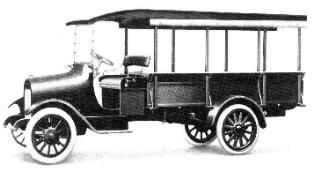 .
. 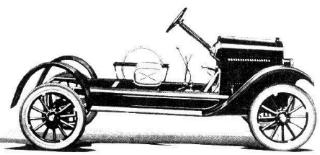
"1918 model T Chevrolet truck"
.
1923 half ton chassis
In 1926 Chevrolet offered a cab on the one ton truck,
but not on the half ton. In 1927, Chevrolet offered a cab and panel
but only on the LM one ton chassis. It can be identified from other
body makers by the blending of hood at cowl to body, usually with cowl
lights. The chassis shipped to other body makers did not have a flared
cowl. Chevrolet discontinued offering the Panel body in 1928 on the
LO and LP one ton chassis. In 1929, the ton & half panel came
standard with bucket seats, Vinyl roof and 4 speed on the floor.
Eat your heart out, Camero lovers.
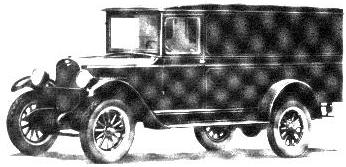 .
. 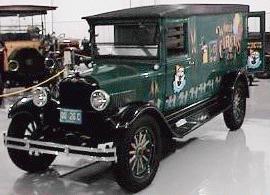
Martin-Parry Body Company

Martin-Parry was one of the major suppliers of bodies
for Chevrolet. GM bought Martin-Parry of Indianapolis in 1931 and
renamed it the "Chevrolet" body plant. Hence, US made Chev cars have
Fisher bodies and GM trux made after 1931 have "Chevrolet" bodies.
In the 1932 line up below from March 12, 1932 Post,
note the number of Panels and Canopys. They offered Standard, Deluxe, and
Special series trux. It appears that the Standard did not have a
chrome radiator shell. I see no ton & half Canopy Express nor
Deluxe Pickup.
Top line = half ton Deluxe panel, Standard panel, ton & half panel,
Standard Canopy Express, Standard screen sides.
Bottom line = Closed Cab-PickUp, CC-PU w/Canopy top,
Deluxe Canopy Express, Special Panel, Roadster Pickup w/Canopy top.
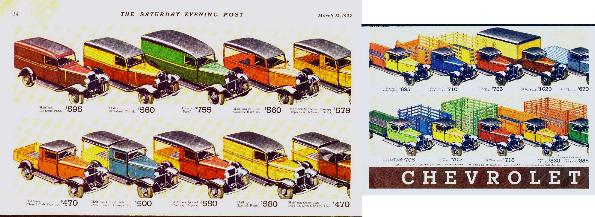
See Panel and Canopy
Express articles for further information. The
Suburban Carryalls first predecessor was still a year away.
The 1937 Chev Chassis
came in 7 sizes:
Deluxe Passenger (model GA) produced 172 Chassis
, Standard pass (GB) made 72,
half ton (GC), Pictured below, = 796, 3/4
ton (GD) = 15, one ton (GE) = 13,
1&1/2 ton 131" WB (single rear wheels
SA) = 557, (duals SB) , = 2424, 157" (SC) = 328,
(SD duals) = 4321
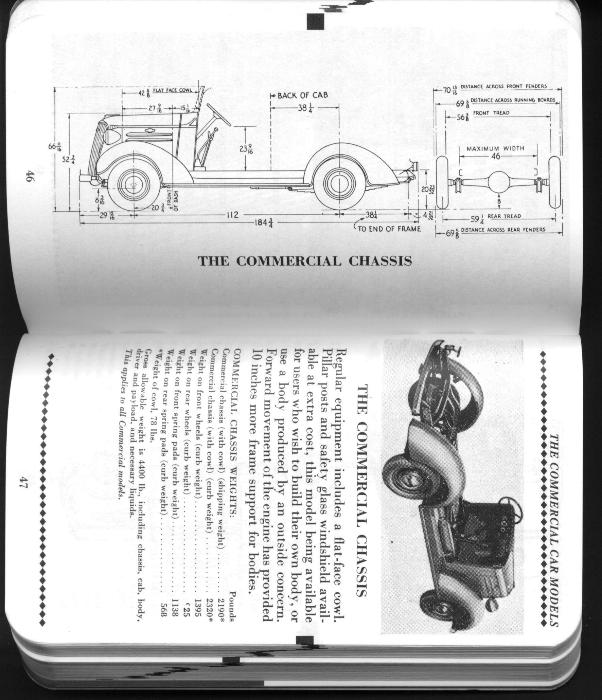
(Above is page from Salesman's Handbook. It is quite interesting
and available from Jim Carter at <jimcartertruckparts@worldnet.att.net>.
You might have noticed that the chassis appear to have
the body belt divide at the cowl in the factory brochure which was only
the case when GM bodies were applied. ( See above) Every other body
maker only got one belt. I guess Proctor - Keefe liked the divide
so much that they made their own. (see below cowl)
A representative of the 131" Wheel Base with single
rear wheels (SA) is my Proctor - Keefe mail truck.
(this is the same chassis as the Ambulance in another article).
The Silver book shows Proctor-Keefe panel type bodies for both 131 &
157" wheelbases. My mail truck was used by San Francisco post office
from 1938 to 1952 when it was sold to general public. It is actually
a 1938 (TA) and for sale. ($800)
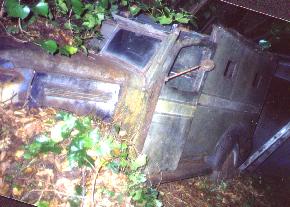 .
. 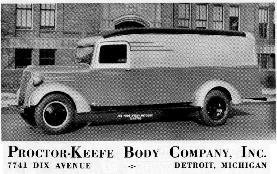
You might note my mail truck is a 38 single rear wheel, short
wheelbase, with Post Office Peep hole windows in cargo area where as the
37 Silver book has long wheel base, dual rear wheel, Deluxe body pictured.
Unfortunately the Proctor - Keefe was built the
"old" way with wood studs and metal sheathing.
Production 1/2 ton
3/4 ton One Ton
Ton & half 131" 131" Dual rear wheels
157" Dual 157"
Chassis
796 15
13
557
2424
328 4321
Cab &Chas 3705
169
108 2992
24276
850 52189
Please email for more photos. Lou
<c1937@znet.com>
Back to trux to continue the tour>>
Here's a great website
for viewing more old Chevrolet & GMC trux: <http://www.stovebolt.com/truck/>
The following are pages on this web site you might like to visit:
Accessories
Ambulance >>
Omnibus >>
Carryall Suburban >>
Engine block casting numbers
Station
Wagons >>
Canopy Express >>
Cab Over Engine >>
Chassis & History
Flxible municipal
bus
Transmission and rearend
Gear ratios
ID Numbers
Limousine >>
Pickup, Utility Express
Coupe
Pickup >
Paint
Colors
Panel Trux
How many were made?
Repair tips
Sedan Delivery >>
Stake and Flatbeds
Simi-trailers
Four Wheel Drive
Look at passenger
cars

Repair tips
Return to trux > >
Return to
Home Page>>
.
